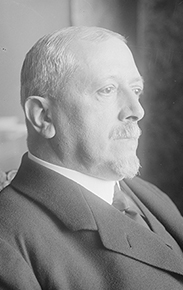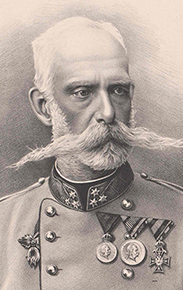World-renowned research facility
The main purpose of the Department of Papyri is, firstly, to preserve these fragile items in climate-controlled conditions, and, secondly, to publicise and make accessible these important sources of information. The Department of Papyri with its outstanding specialist library has a reputation as a renowned research facility whose scientists collaborate with a large number of international scholars on conserving and studying the library's extensive holdings. We fulfil our additional educational mandate primarily through the existence of the » Papyrus Museum.

History of the Department of Papyri
1878/79: Farmers working near to the ancient city of Arsinoe (now called Medinet el-Fayum), about 80 km south-west of Cairo, stumbled across a huge find of papyri. The Viennese antiques dealer Theodor Graf (1840–1903) happened to be in Egypt; so he bought the papyri and took them to Josef von Karabacek (1845–1918), Professor of History of the Orient at the University of Vienna, for further study. Karabacek recognised the scientific value of these artefacts from ancient times and commissioned Graf to make extensive further acquisitions. 1881/82: Graf brought about 10,000 papyri to Vienna and Karabacek persuaded Archduke Rainer (1827–1913), a member of the Austrian imperial family, to buy the entire collection.
![[Translate to English:] Theodor Graf [] Theodor Graf](https://webarchiv.onb.ac.at/web/20200101191508im_/https://www.onb.ac.at/fileadmin/user_upload/1_Sitemap/Bibliothek/Sammlungen/Papyrus/teaser_Graf.jpg)
1883: The private collection called “The Papyrus of Archduke Rainer” was established and initially kept at the Austrian Museum of Art and Industry, now the Museum of Applied Art (MAK). Over the years that followed, Graf brought more large collections of papyri to Vienna from Ashmunein (the ancient city of Hermupolis) and Ihnasiya (Herakleopolis) in central Egypt and from various archaeological sites in Fayum (such as Dimai, site of the ancient settlement of Soknopain Neos). Archduke Rainer bought these, too, so that within a few years the collection had grown to almost its present size.

1899:Karabacek was appointed Prefect of the Imperial Library and in the same year Archduke Rainer gave his papyri collection to the Emperor Franz Josef I as a birthday present – with a request to make it a special collection within the Imperial Library.
2001: The entire collection was entered in the UNESCO “Memory of the World” Register.
